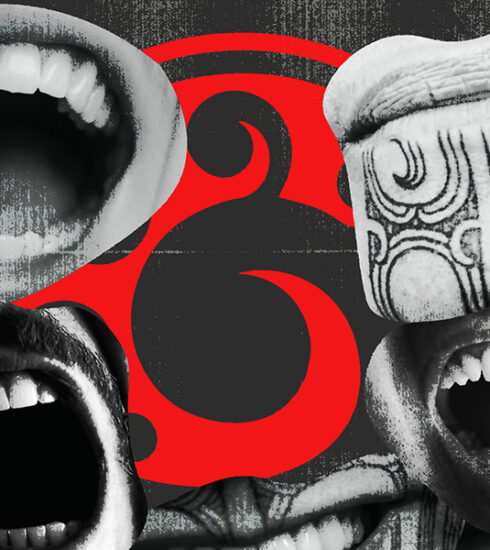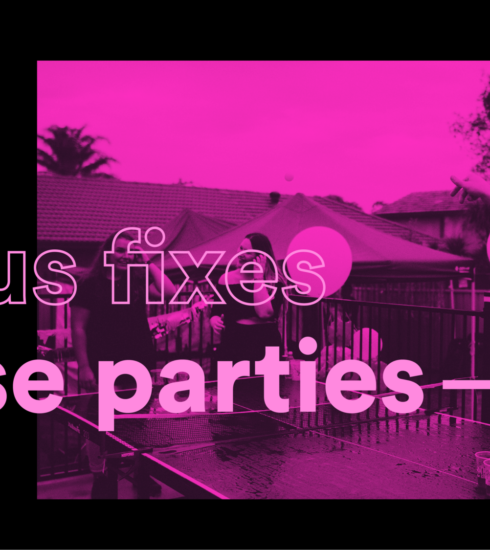Fret & Debt – Issue 1
It’s O-Week, you’re at the bar, and drinks are going cheap. You may as well put the whole round on your eftpos card, because, hey, this counts as a “Course-Related Cost”, right? And, it’s basically free money. Or a future-you problem, at the very least.
If you’ve got a student loan in New Zealand, you’re not alone. Most of your friends and peers have taken out loans, and it almost goes without saying that if you go to university you’ll take out a loan at some point.
The Government introduced Student Loans in 1992, although back then it was a vastly different scheme to the one you see now. Aside from not being able to do it online, and probably not having the shitty hold music we’re used to hearing (I’m looking at you, “Maybe Tomorrow” by Golden Horse!), the initial scheme provided students with a bulk payment, and charged interest at a rate much lower than other money lenders. Sensibly, many students used this to their benefit by investing it, and so that style of student loan came to an end after bitter complaints about “students having too much money”. I guess some things haven’t really changed.
Changes to the Scheme
What has changed, however, is the way the Student Loan scheme has been run; with each Government enacting different policies and plans for how students borrow money. In 2001, Labour chose to stop interest payments accruing at all while students studied, and in 2005 they brought in interest free loans for anyone remaining in New Zealand. In 2007, the Labour Government introduced the 3-year loan repayment holiday.
While the Labour Government made changes to the Student Loan scheme that seem to make loans easier, and kinder towards students (a position they’re known for), the National Government, has often taken a different path (a position they’re also known for). In 2012 the repayment holiday was reduced from 3 years to one year, and access to student loans was cut for people over the age of 55. In 2013, the repayment rate was lifted from 10% to 12%, and the policy of arresting loan defaulters at the border was announced.
Cash-Money Numbers
These changes have likely come before your time. In fact, the Student Loan Scheme was probably established before most of you were born- I know I was certainly just a dot on the horizon back in 1992. Since the inception of student loans, however, 1.33 million New Zealanders have dealt with student loans since the scheme began in 1992. You’re definitely not alone.
Most of those loans, like yours I imagine, are still outstanding- in 2019 over 700,000 people still had some kind of student loan to pay off. The number of people who’ve repaid their student loans in full is creeping up there, and since we only have the 2019 figures, both numbers have increased by now. In 2019, however, 615,000 had already repaid their student loan in full. And what does that add up to? A total of $27.4 billion dollars that have been borrowed through the student loan scheme.
1.33 million people, borrowing 27.4 billions dollars. Those are some big numbers.
The amount of people borrowing money from StudyLink began to ease off around 2010, and in the last few years the statistics of the amount of money that’s been borrowed has also started to decrease. There’s many possible reasons for this, and it’s worth noting that the “Fees Free” First year plan, along with the Free Tertiary Education plans that the Government has recently enacted would have had an impact on these dropping numbers.
While the numbers are slowing now, the levels of student debt are not. The cost of study is going up, and most students are now leaving their studies with higher levels of debt than those who came before them. In 2017 most students had on average $17,000 of debt. By 2019 this number had risen to an average balance of $22,630. If you’re spending just 3 years at uni, and then heading off to employment, you can expect for it to take you on average 7 years to pay off your loan.
Repayment Rate
So, let’s talk about repaying your loan, and those 7 years of seeing even more of your paycheck slip away. Or, if you’re in my shoes, I’m willing to bet that it’s going to take far more than 7 years. You know that you’ll have to repay your loan at some point, but are you aware of when, and how much?
When you begin earning over $20,020 a year, you have to start paying back what you’ve borrowed. You get to keep the first $385 that you earn each week, without having to work about your student loan, but then you repay 12% of every dollar after that that you earn, before tax.
The IRD website clarifies it nicely, saying: For Example, if you earn $600 a week before tax, your repayment will be $25.80 (($600 – $385) x 0.12 = $25.80).
If you’re living and working in New Zealand, your repayments will be simple. 12c out of every dollar disappears before you’ve even had the chance to miss it. And slowly but surely your loan balance decreases. As far as loans go, it is a nice, uncomplicated system.
Overseas Borrowers
If you decide to head overseas, however, as many Kiwis hopefully will post-Covid, then your repayments get a bit more complicated. I’ve alluded to the interest rates, and 1-year repayment holiday above, but in short.
When you stop contributing to the New Zealand economy, you need to start paying back your Student Loan, with interest. While it’s annoying, and so expensive, it does make sense. Once you’re out of New Zealand for over six months you become classified as an overseas borrower, and you start accruing interest on whatever your loan balance is. You get a one year holiday from having to make payments, but the interest does keep adding up over this time. Unfortunately at the end of that year, your loan balance is going to be even bigger than it was when you left, and then you have to start making “Mandatory Repayments”. And keep making them, until you return to New Zealand, pay off your loan, or die. These repayments are calculated based on the balance of your loan- If your loan is between $15,000 and $30,000, you have to make a minimum of $2,000 in repayments a year. If your loan is above $60,000, this goes up to $5,000 a year. Bear this in mind when you head off on your OE!
Cruisers are cheaper than Jagerbombs
Whether you agree or disagree with the way the Student Loan scheme is run in New Zealand, and the flow-on effects of it, the fact that you’ve made it to the end of this article means you likely have one. So read up a bit more, and think about why you’ve got a Student Loan, and how you feel about paying it off (I wish I had!).
And I’m not here to tell you off for putting those Jagerbombs down as a course related cost, but hey, at least buy something cheaper!





